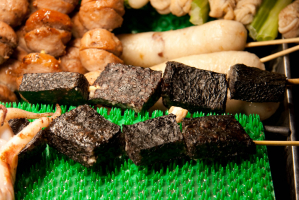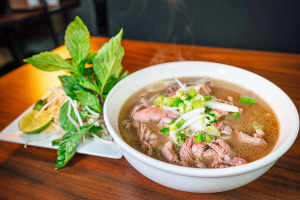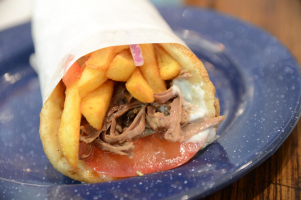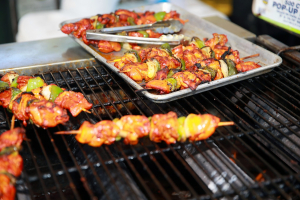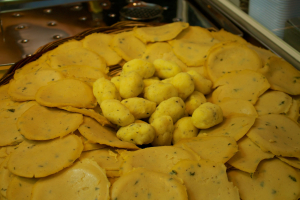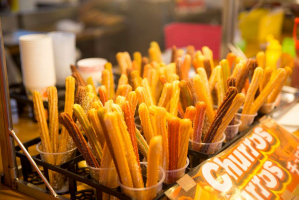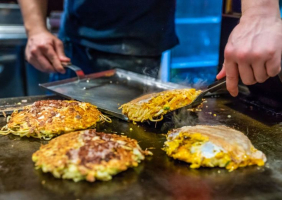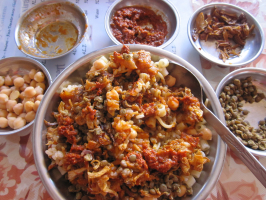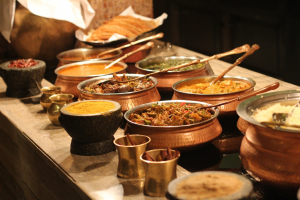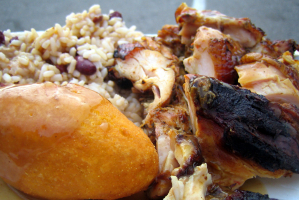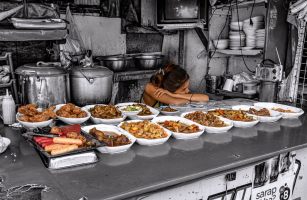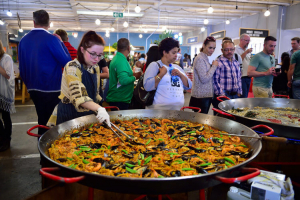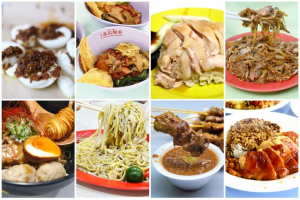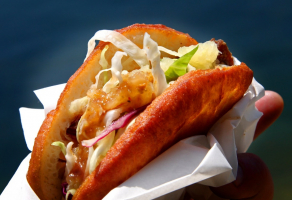Top 10 Most Popular Malaysian Street Foods
Malaysian street foods are a culinary journey like no other. They represent the rich cultural tapestry of the nation. This article explores the depth and ... read more...diversity of these delightful dishes.
-
At the pinnacle of Malaysian street food, Nasi Lemak reigns supreme. It's a dish that carries the weight of tradition and the heartbeats of generations.
Originally a farmer's meal, it provided the necessary sustenance for a long day in the fields. Its historical background paints a picture of hardworking Malaysians deriving energy from this dish. "Rich rice", as the name translates, perfectly captures the dish's essence. The rice, steamed in creamy coconut milk, forms the foundation. What started as a simple meal has now embraced a variety of ingredients.
The dish's primary cultural influence is Malay, with a slight hint of Indian and Chinese culinary traditions. These influences enrich the taste and showcase the melting pot that is Malaysian culture.
Diving into its flavor profile, one is met with a symphony of tastes. The main flavor is the rich and creamy coconut milk-infused rice. It's juxtaposed with the spicy sambal, a type of chili paste, which adds a fiery kick. Crunchy anchovies, roasted peanuts, and a hard-boiled or fried egg often accompany these main components. Sometimes, a slice of cooling cucumber offsets the dish's spiciness.
Yet, every Nasi Lemak can have its unique character. The core ingredients remain consistent: rice, sambal, anchovies, peanuts, and egg. But chefs and street vendors introduce their flair. Some bring in the robustness of rendang or the savory notes of spiced fried chicken.
Traditionally, Nasi Lemak was a breakfast dish. Wrapped in a banana leaf, it was easy to carry to the fields or to work. Today, it's transitioned into an anytime meal. Be it dawn or dusk; it finds its place in the Malaysian culinary scene.
Key Takeaways:
- Origin: Born in Malay kitchens, with a sprinkle of Indian and Chinese influences.
- Flavor Profile: A dance of creamy, spicy, salty, and crunchy elements.
- Main Ingredients: Coconut milk-infused rice, sambal, anchovies, peanuts, and egg.
- Serving Occasion: From breakfasts of yesteryears to today's all-day delight.
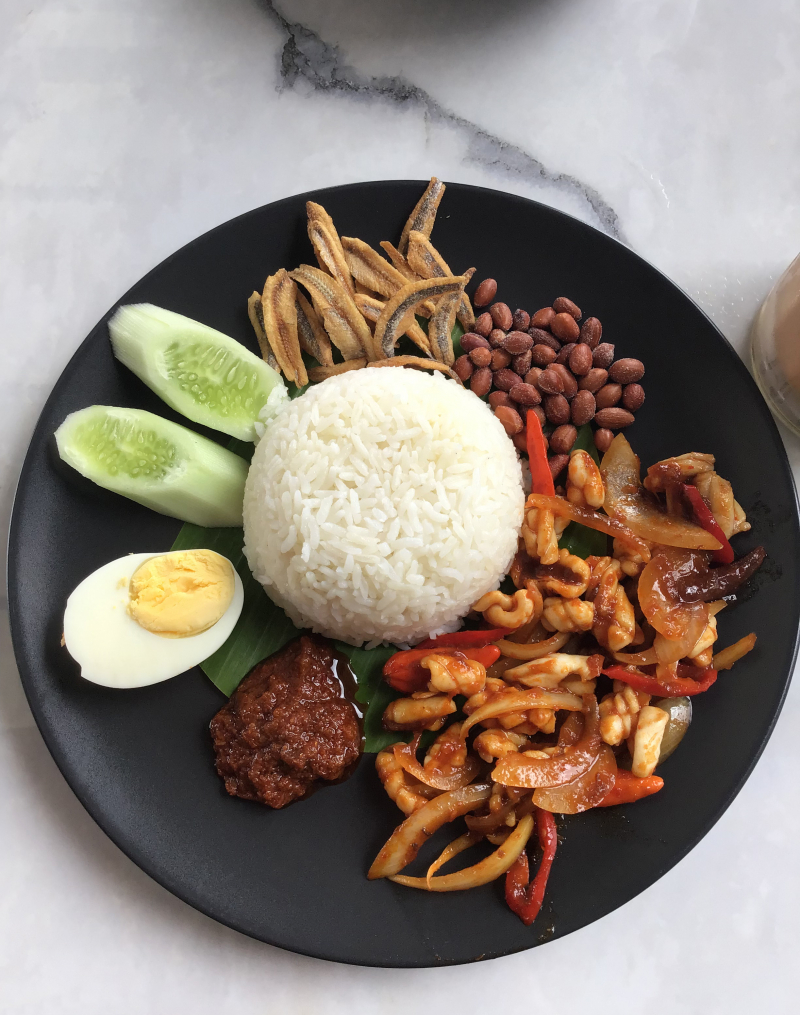
Screenshot of https://en.wikipedia.org/wiki/Nasi_lemak Video by John Ragai -
Char Kway Teow, a delightful treat of Malaysian streets, takes the second spot on our list. This flavorful noodle dish wraps you in a culinary embrace, and transports you to Malaysia's vibrant hawker centers.
Originating from the Penang region, Char Kway Teow tells a tale of fishermen and farmers. They needed energy-packed meals to fuel their physically demanding tasks. As translated to "stir-fried rice cake strips," the dish began its journey as a simple, inexpensive plate of seafood and noodles.
Moreover, the primary cultural roots of Char Kway Teow are undeniably Chinese, but it wears the Malaysian badge proudly. The influence of Penang's Chinese Hokkien and Teochew communities is evident in the dish's preparation and flavor nuances.
When you delve into its flavor profile, you're greeted with a waltz of tastes. At its heart, flat rice noodles take the stage. They're stir-fried in a hot wok, gaining a smoky aroma. The dance of flavors includes spicy chili, crisp sprouts, and tender prawns or bloody cockles. The occasional hint of belacan (shrimp paste) or sausage deepens its complex palate.
Yet, as with many iconic dishes, Char Kway Teow varies from one vendor to another. Some swear by the use of duck eggs, which lend a richer taste than chicken eggs. Others might add a touch of tamarind juice for a subtle tang. And in some variations, thin slices of fish cake or squid might make a cameo.
Historically, Char Kway Teow was the go-to dish for laborers. Its rich combination of carbs and protein provided the energy boost needed for their demanding jobs. Fast forward to today, and its popularity has skyrocketed. Now, from street stalls to upscale restaurants, it's celebrated across Malaysia and beyond.
Key Takeaways:
- Origin: Char Kway Teow finds its roots in Penang, fueled by the laboring communities of fishermen and farmers.
- Flavor Profile: A medley of smoky noodles, spicy chili, fresh seafood, and sometimes, a dash of tamarind or belacan.
- Main Ingredients: Flat rice noodles stir-fried with prawns, sprouts, chili, and occasionally duck eggs or sausage.
- Serving Occasion: All times of the day, anywhere in Malaysia.
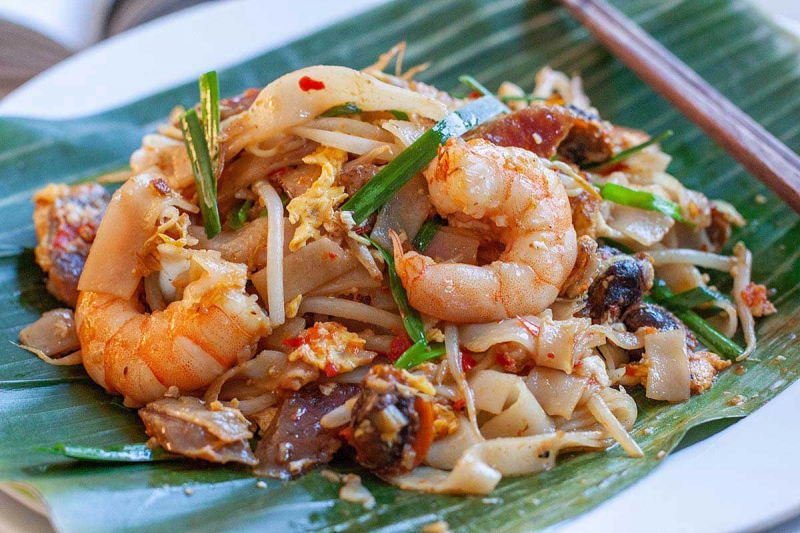
Screenshot of https://rasamalaysia.com/char-kuey-teow/ Video by Honeyrove -
Holding a prestigious third spot, Satay is more than just skewered meat; it's a celebration on a stick. When the aroma of grilled meat fills the air, you know a Satay vendor is nearby. It paints the atmosphere with mouthwatering scents.
Diving into its history, Satay finds its cradle in Java, Indonesia. But, as it traveled, Malaysia embraced it, giving it a unique twist. The name "Satay" is believed to originate from the Tamil word "satti", which refers to pieces of meat. This linkage hints at the Indian influence on the dish's evolution in the region.
The cultural tapestry of Satay is rich. While Indonesia claims its origin, the dish's adaptation in Malaysia speaks volumes of the local Malay and Indian Muslim communities' culinary prowess. Their influence has shaped Satay into what Malaysians relish today.
Unraveling its flavors, each bite of Satay is an explosion of taste. Tender pieces of meat, marinated in a blend of lemongrass, turmeric, and a mix of spices, are grilled to perfection. The smoky flavor of the meat pairs exquisitely with the tangy, spicy, and slightly sweet peanut sauce served alongside.
The choice of meat varies. Whole chicken and beef are common, adventurous souls explore lamb, rabbit, or even fish Satay. Every region, every vendor has a signature marinade, making each Satay experience unique.
Originally, Satay was a simple dish, often sold by Javanese immigrants from portable pushcarts. It was an affordable treat for many. Today, its status has elevated. From humble street stalls to grand feasts and celebrations, Satay finds its rightful place.
Key Takeaways:
- Origin: While rooted in Java, Indonesia, Satay's Malaysian journey is marked by Malay and Indian Muslim culinary touches.
- Flavor Profile: Grilled, smoky meat bursting with spices and paired with a delectable peanut sauce.
- Main Ingredients: Meat of choice, lemongrass, turmeric, spices, and the iconic peanut sauce.
- Serving Occasion: Both everyday meals and festive occasions in Malaysia.
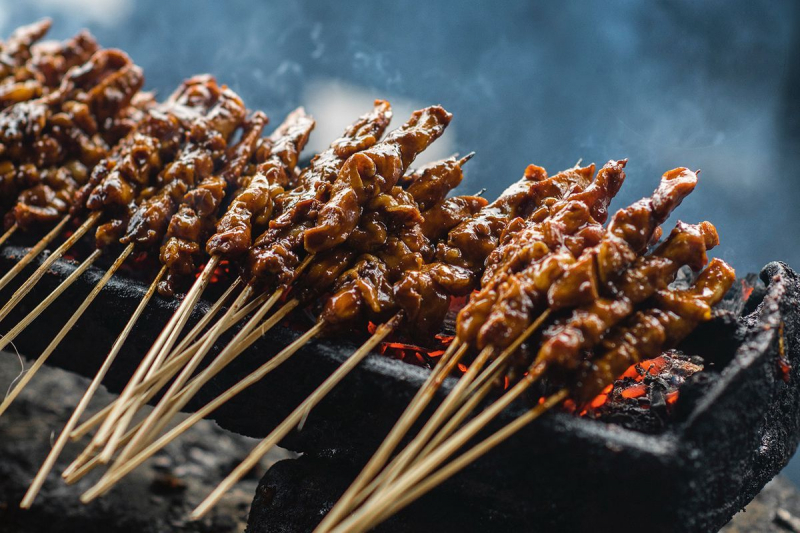
Screenshot of https://www.delicious.com.au/recipes/collections/malaysian-recipe/3c339ca7-203c-4e05-9f6e-b2fb0002020a Video by 야미보이 Yummyboy -
Securing the fourth spot, Roti Canai is a culinary masterpiece that Malaysia wears proudly. Thin, flaky layers, crispy edges, and soft centers make it an irresistible delight.
Delving into its origins, Roti Canai bears a striking resemblance to the Indian parotta. Historically, the influx of Indian Muslims to Malaysia brought along this culinary gem. "Canai" means "to knead" in Malay, a testament to the labor of love that goes into creating this flatbread.
Roti Canai's cultural essence is a tribute to the Indian Muslim community, often referred to as 'mamak' in Malaysia. Their kitchens gave rise to this dish. And today, it's hard to imagine Malaysian cuisine without it. This bread, simple in its form, is a bridge that connects cultures and people.
Savoring Roti Canai is an experience. Its basic form, a plain flatbread, comes to life when paired with dhal (lentil curry) or other types of curries. The elasticity of the dough, the buttery layers, and the crispy exterior make every bite memorable. While the traditional form remains popular, innovations have led to versions stuffed with eggs, onions, sardines, or even sweet fillings like bananas.
Making Roti Canai is an art. Dough is flattened, flipped, and spun in the air to achieve thinness before being folded and cooked on a hot griddle. This spectacle often draws an audience at mamak stalls, mesmerized by the theatrics of the process.
Once an exclusive morning treat, Roti Canai is now a staple available throughout the day. Whether it's breakfast, lunch, dinner, or a late-night snack after a night out, this bread knows no bounds.
Key Takeaways:
- Origin: Rooted in the Indian subcontinent, Roti Canai found its unique identity in Malaysian mamak kitchens.
- Flavor Profile: Crispy, flaky layers with a soft center, often enjoyed with various curries.
- Main Ingredients: Basic ingredients like flour, water, ghee, and sometimes additions like eggs or sardines.
- Serving Occasion: From dawn till dusk, Roti Canai has transitioned from a breakfast item to an all-day favorite.
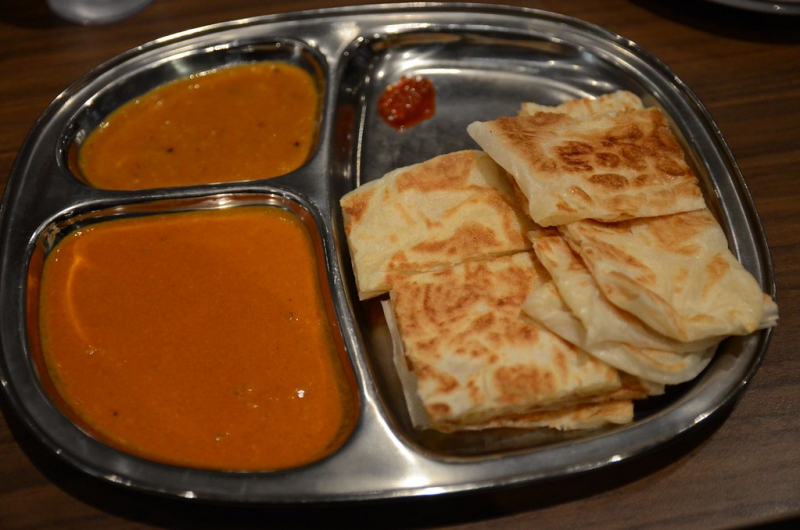
Photo by Alpha on Flickr https://www.flickr.com/photos/avlxyz/8186580690 Video by The Food Ranger -
Taking the fifth spot in Malaysia's gastronomic journey is Rojak. This dish is the essence of Malaysia on a plate.
Rojak means 'mixture' in Malay, and the dish lives up to its name. You'll find a blend of fruits and vegetables, all brought together with a signature sauce. Malaysia's Rojak stands distinct compared to its cousins from other Southeast Asian regions. Its special touch is a blend of Malay origins with hints of Chinese and Indian.
The flavor? It's a medley. The sauce steals the show. Made from shrimp paste, sugar, lime, and chili, it balances sweetness with tang and a little heat. The fresh ingredients in Rojak are notable. There's crunchy cucumber, juicy pineapple, refreshing turnip, and tart young mangoes. A sprinkle of toasted peanuts and sesame seeds adds a contrasting crunch. Some versions even toss in fried tofu or dough fritters for an extra dimension.
This dish isn't just about taste. Rojak reflects Malaysia. It showcases harmony, representing the nation's mixed cultures. Different, yet united in flavor.
It started as a pick-me-up. A snack for those afternoon hunger pangs. The zesty taste served as a quick energy booster. Today, its charm has spread. Rojak graces many tables, from street side stalls to upscale eateries. It captures hearts, both of locals and tourists.
The evolution of Rojak speaks volumes. From humble beginnings, it now holds a revered place in Malaysian cuisine. It doesn't just satisfy hunger. Rojak offers a glimpse into Malaysia's heritage, its diverse community, and its spirit of unity.
Key Takeaways:
- Origin: Primarily Malay, enriched by Chinese and Indian flavors.
- Flavor Profile: A perfect blend of sweet, tangy, and spicy.
- Main Ingredients: Fresh fruits, veggies, shrimp paste sauce, topped with nuts.
- Serving Occasion: Once an afternoon snack, now an all-day delight.
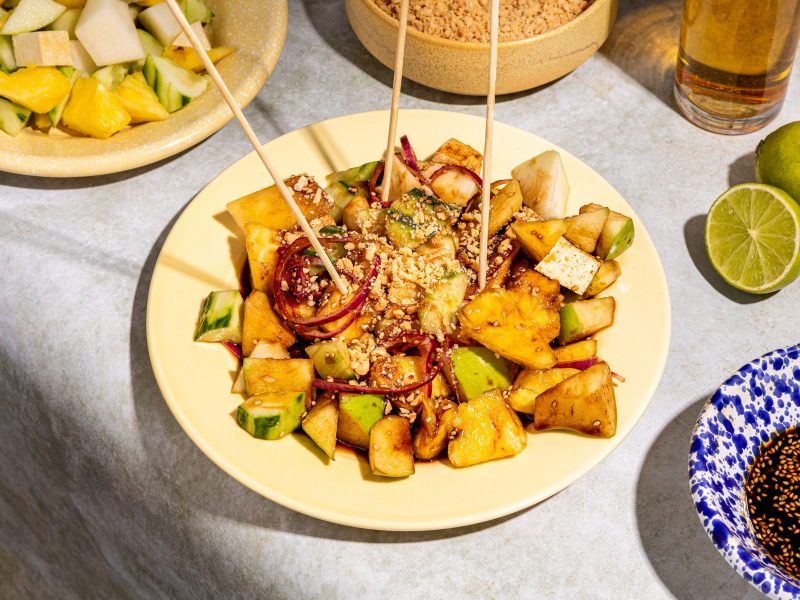
Screenshot of https://www.kitchenstories.com/en/recipes/ruby-makes-rojak-malaysian-style-sweet-and-sour-salad Video by The Food Ranger -
Popiah, the sixth star in Malaysia's culinary constellation, unfolds a tale of flavors in every bite. This roll wraps up a vibrant blend of ingredients. It delivers a burst of sensation with each mouthful.
Hailing from Fujian, China, Popiah made its way to Malaysia through Chinese immigrants. Over time, it took on a Malaysian flair. Today, it seamlessly blends both cultures, telling a story of migration and adaptation.
The foundation of Popiah is its delicate, paper-thin skin. Soft yet holding its own, it wraps up the filling neatly. And what's inside? A flavorful mix! Sautéed jicama and carrot strike the main chord. Add to that some crispy lettuce, crunchy bean sprouts, and prawns or crab meat. A hint of tofu and fried shallots provide depth.
The sauce is where magic happens. A sweet bean sauce, sometimes combined with chili, paints each roll. It binds the ingredients, offering a cohesive taste profile. A dip in this sauce before a bite elevates the experience.
Now, Popiah isn't just a dish. It's an activity! Often, ingredients are laid out buffet-style. Everyone gathers, making their roll. Personal touches shine. Some prefer more spice, others lean on sweetness. This communal activity turns a simple dish into a bonding moment.
Street vendors and home kitchens compete in making the best Popiah. While vendors offer a quick, delicious bite, families have secret recipes. These guarded secrets pass down, ensuring the legacy of this dish stays alive.
Popiah, in essence, represents Malaysia. A blend of cultures, a taste of history, and a touch of modern evolution. It's not just food, but a piece of Malaysian heart and soul.
Key Takeaways:
- Origin: A Fujian delicacy, reimagined in Malaysia.
- Flavor Profile: Crunchy, fresh with sweet, and sometimes spicy undertones.
- Main Ingredients: Thin skin, jicama, carrot, lettuce, prawns or crab, and sweet bean sauce.
- Serving Occasion: A communal dish, perfect for gatherings and everyday snacking.
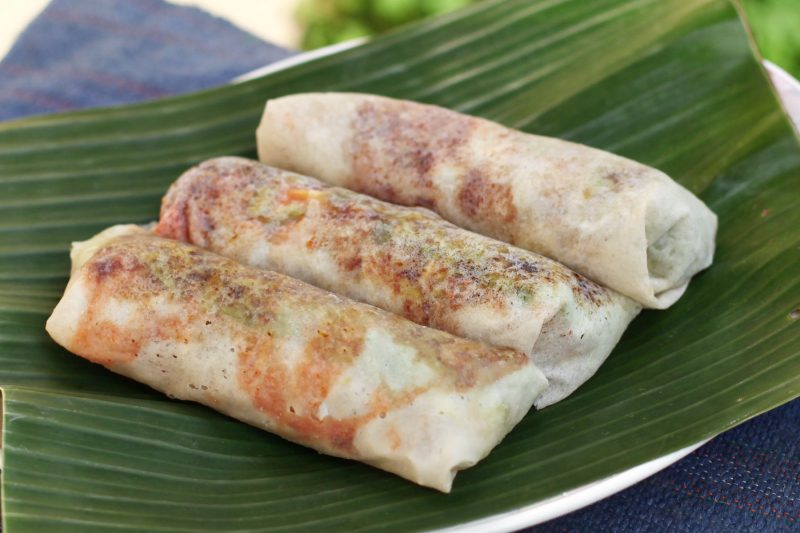
Screenshot of https://en.wikipedia.org/wiki/Popiah Video by So Yummie -
Nestled at the seventh spot of Malaysia's street food gems is Hokkien Mee. Drenched in flavor, this noodle dish tells stories of heritage and culinary craftsmanship.
Fujian Province in China is the birthplace of Hokkien Mee. Yet, when it touched Malaysian shores, the dish evolved. It embraced local spices and cooking styles, resulting in a distinct taste. Malaysia's Hokkien Mee carries Chinese roots but proudly wears a local badge.
The base? Thick yellow noodles. They soak up the rich sauce, becoming the dish's backbone. These noodles swim in a dark, aromatic gravy. The secret? A stock brewed with pork bones and prawn heads. It simmers for hours, extracting deep flavors.
Key players joining the noodles are prawns, pork, squid, and vegetables. They add texture and layers of taste. A hint of chili paste can spice things up, while crispy fried pork lard adds crunch. It's a play of textures and flavors, dancing in harmony.
One unique trait of Hokkien Mee is its two versions. In Kuala Lumpur, it's braised in dark soy sauce, resulting in a darker, sticky dish. Penang offers a soup variant, with a light, shrimp-infused broth. Both equally captivating, they showcase regional culinary twists.
Street stalls at night are the best spots for this dish. Smoke rises as vendors stir big woks. The aroma pulls you in. Watching Hokkien Mee prepared is a treat. It's a dance of ingredients meeting heat, crafted by skilled hands.
Many locals claim their favorite stall. Loyalties run deep. Each vendor has a tweak, a secret ingredient. And that's the beauty of Hokkien Mee. It's a canvas, allowing chefs to paint their flavors.
Key Takeaways:
- Origin: From Fujian, China, transformed in Malaysia.
- Flavor Profile: Rich, savory with elements of seafood and meat.
- Main Ingredients: Thick yellow noodles, prawns, pork, squid, and a deeply flavored stock.
- Serving Occasion: Perfect for night street food adventures and family dinners.
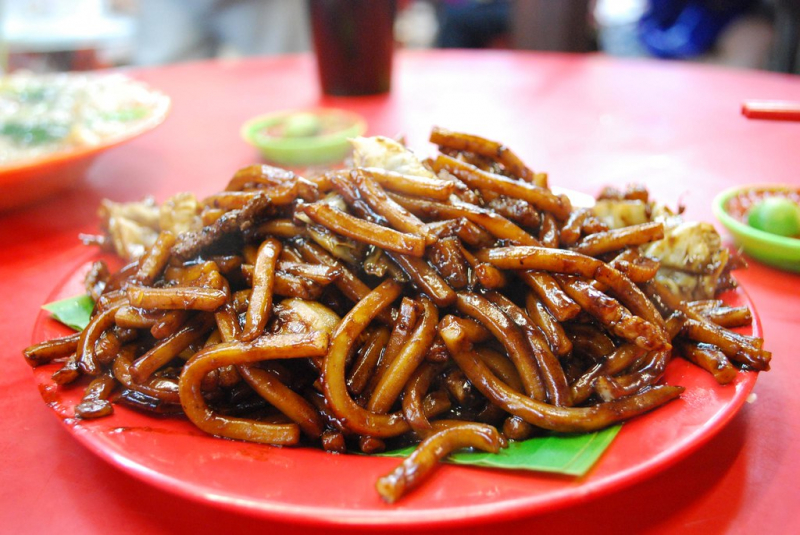
Photo by Alpha on Flickr https://www.flickr.com/photos/avlxyz/3417990786 Video by Food Hunter 探食 -
Occupying the eighth seat in Malaysia's culinary treasures is Otak-otak. A treat for the senses, this dish symbolizes innovation and cultural blend.
Dive into its roots, and you'll trace links to Indonesia. However, Malaysia, with its flair, molded Otak-otak. All of them create a version that's distinct and beloved. The name is intriguing. It translates to "brains", probably due to the dish's soft, brain-like texture. Yet, the taste is miles from its peculiar naming.
At its heart, Otak-otak is fish meat. This meat gets blended into a paste. The flavor magic happens next. Coconut milk, spices, and herbs like lemongrass and kaffir lime leaves infuse their essence into the fish paste. Together, they create a mixture that's creamy, spicy, and fragrant.
Then comes the wrapping. Banana leaves become the chosen envelope. They don't just serve as a cover; they contribute to the dish's unique aroma. Once snugly wrapped, these packets get grilled. Flames kiss the leaves, cook the fish paste inside, and release an aroma that's hard to resist.
Texture is crucial in Otak-otak. Soft, slightly bouncy, it melts in the mouth, leaving a trail of rich flavors. Each bite offers hints of chili, the creaminess of coconut, and the freshness of fish. They harmoniously come together.
Regions in Malaysia offer their takes. In Johor, you'll find Otak-otak that's redder due to chili dominance. Penang's version leans towards a whiter hue, highlighting the fish's purity. Whichever variant, the essence remains – a delicate balance of flavors. It’s a testament to Malaysia's culinary prowess.
Local markets and hawker stalls proudly display Otak-otak. It's often an accompaniment, elevating meals. But, many cherish it solo, enjoying each nuanced flavor. Perfect for snacking or as a side, it embodies versatility.
Key Takeaways:
- Origin: Inspired by Indonesia, perfected in Malaysia.
- Flavor Profile: Creamy and spicy with hints of herbs.
- Main Ingredients: Fish paste, coconut milk, chili, spices, and banana leaves.
- Serving Occasion: A cherished snack or an elevated side dish at meals.
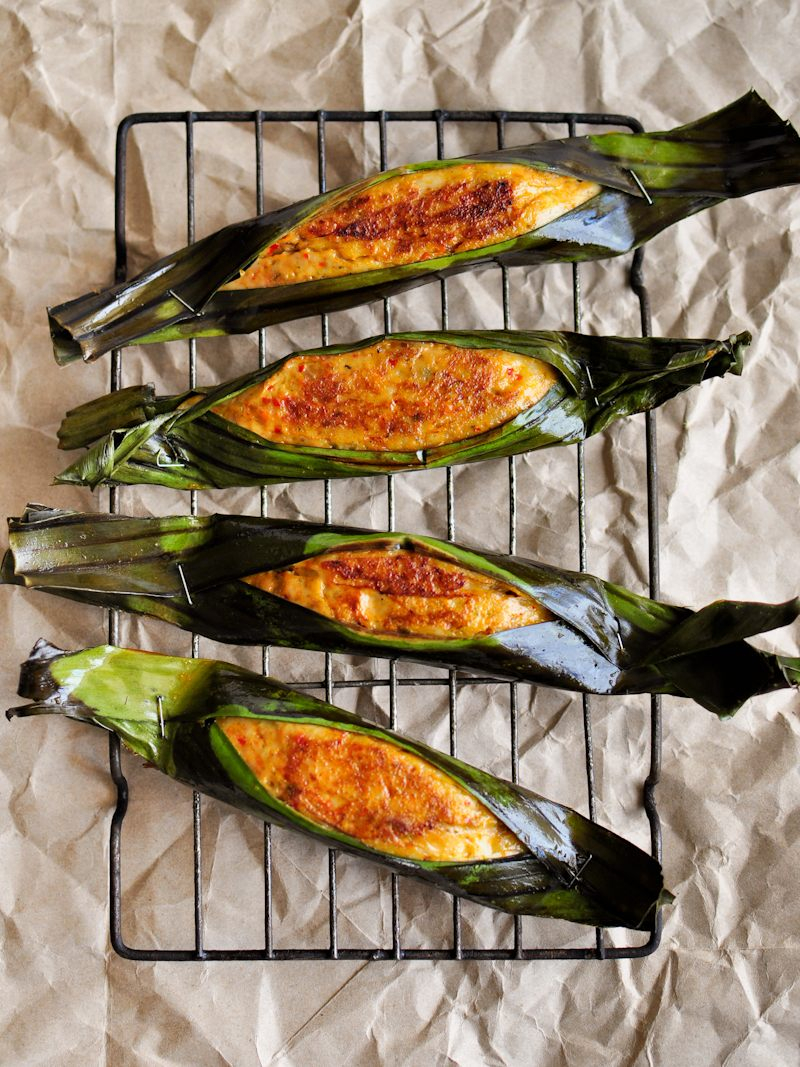
Screenshot of https://jackiem.com.au/2014/04/27/recipe-how-to-make-otak-otak-grilled-spicy-fish-cakes/ Video by Mukkebi Street Food -
Lok-lok stands out in Malaysia's street food arena. It's more than just a dish. It's an experience, a story of camaraderie and shared joy. As you walk through bustling Malaysian streets, especially after sunset, Lok-lok stalls draw you in.
Originating from Penang, this dish has traveled far and wide across Malaysia. It brings people together. Families, friends, and even strangers gather around the pot. Skewers in hand, they share tales and laughter.
Let's talk about the skewers. From fresh prawns to crunchy vegetables and succulent meats, there's a choice for every palate. You select your favorites, then dip them into a simmering broth. The aroma of cooking fills the air, and anticipation builds.
But what truly defines Lok-lok is the array of sauces. Spicy, tangy, or sweet, each sauce elevates the skewer. Every bite becomes a flavor adventure. And as with many great foods, Lok-lok evolves. Traditional items like prawns remain beloved. Yet, new ingredients like tofu or fish balls keep it fresh and exciting.
Despite the allure of the flavors, the heart of Lok-lok lies in its spirit of community. It’s not just about eating. It's about bonding. Sharing pots and stories, people connect. It transforms a simple meal into a memorable event.
If you're in Malaysia, make it a point to experience Lok-lok. Night markets are the best spots. Amidst the hustle and bustle, find a Lok-lok stall. Choose your skewers, dive into the sauces, and join in the tradition.
Key Takeaways:
- Origin: Birthed in Penang and now a favorite across Malaysia.
- Flavor Profile: Varied tastes from skewers enhanced by multiple sauces.
- Main Ingredients: A mix of skewered items, from meats to vegetables, paired with diverse sauces.
- Serving Occasion: Night markets, gatherings, any time Malaysians want to share joy and food.
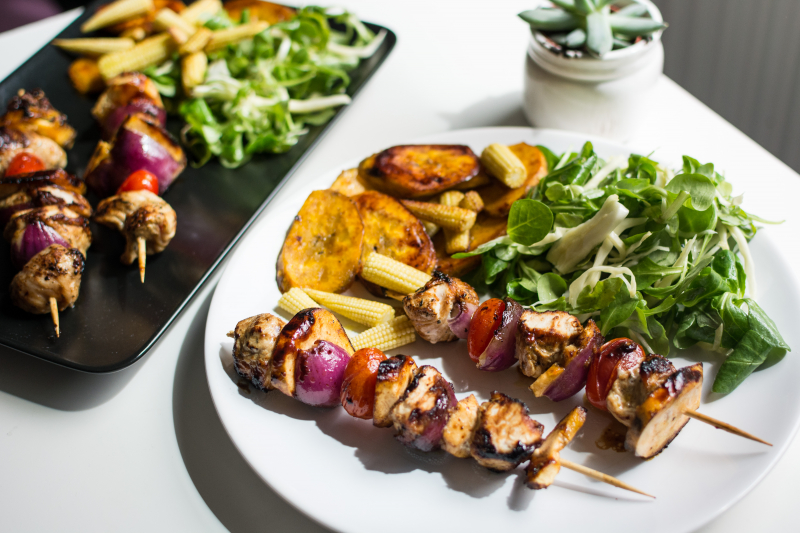
Photo by rawpixel.com / Jakub Kapusnak on Rawpixel https://www.rawpixel.com/image/447818/free-photo-image-asian-food-hot-pot-brunch Video by Honeyrove -
Malaysia boasts a culinary gem called Cendol. This dessert stands out not just in flavor but also in its vibrant presentation. Let's dive deep into the allure of Cendol.
Cendol has a distinct look. The first thing you see are green jelly noodles. These aren't your average noodles. They're made from rice flour and get their green hue from pandan juice. This gives them a unique grassy taste. When you touch them, they're soft and a little slippery, perfect for slurping.
Now, imagine a liquid that's thick and creamy. That's coconut milk. It's poured generously over the noodles. This milk is the soul of Cendol. Its creamy texture and subtle sweetness balance the overall flavor.
But wait, there's another key player. The palm sugar syrup. It's not just sweet; it has a depth to its flavor, somewhat like caramel. Pour this over the coconut milk, and you get a rich blend that's sweet and creamy. This combination is the core flavor of Cendol.
Variety is the spice of life. And Cendol offers this in the form of toppings. While the basic ingredients remain consistent, vendors love adding their touch. Some sprinkle soft red beans. Others might add sweet corn or even jackfruit pieces. These toppings elevate the dish, adding layers of taste and texture. Cendol isn't just about taste. It's a reflection of Malaysia's diverse history. Ingredients brought by ancient traders blended with local tastes, leading to the birth of this dessert.
Finally, eating Cendol is an event. Watching vendors layer the ingredients, the symphony of sounds as ice crushes, and the colors mixing in a bowl is captivating. And when you take that first spoonful, the coolness of the desert, combined with its rich flavor, takes you on a delightful journey.
Key Takeaways:
- Origin: Cendol is Malaysia's tribute to its diverse history.
- Flavor Profile: A delightful combo of sweet palm sugar, creamy coconut milk, and the subtle grassiness of pandan noodles.
- Main Ingredients: The dessert is built on pandan jelly noodles, coconut milk, and palm sugar syrup. Toppings like red beans and jackfruit add extra flair.
- Serving Occasion: Perfect for hot days, during festivals, or any time you want a refreshing, sweet escape.
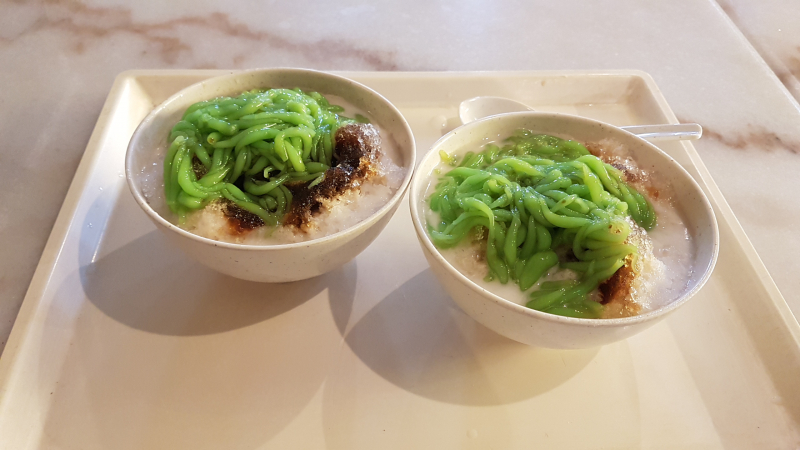
Screenshot of https://en.wikipedia.org/wiki/Cendol Video by Travel Thirsty












